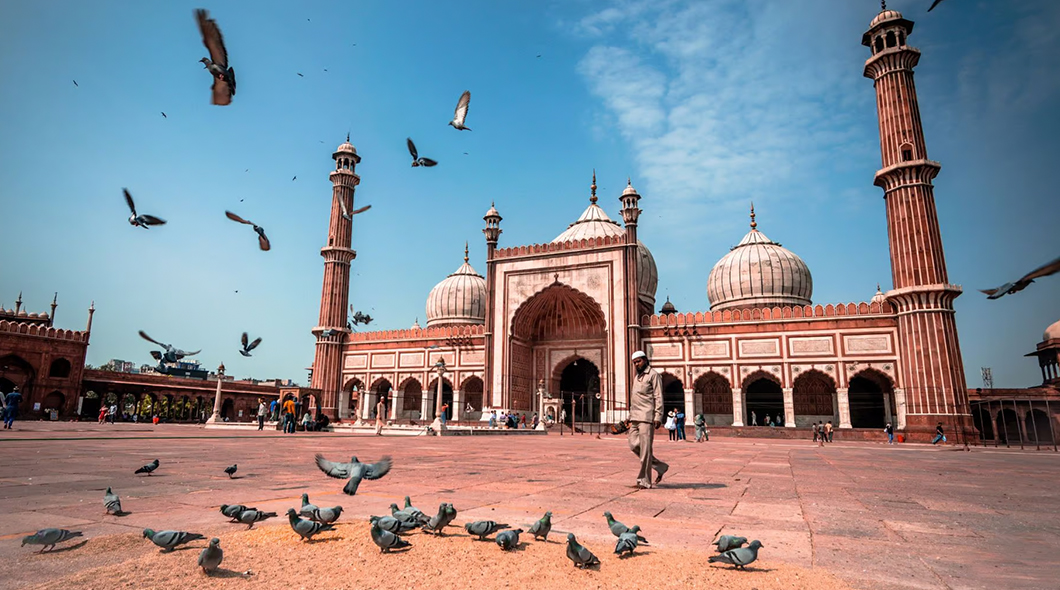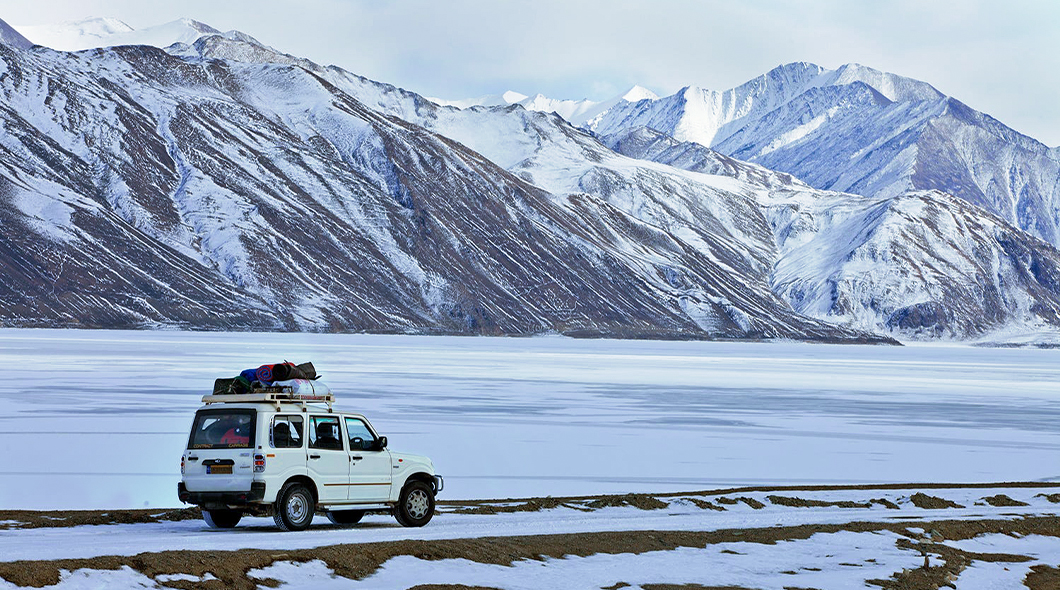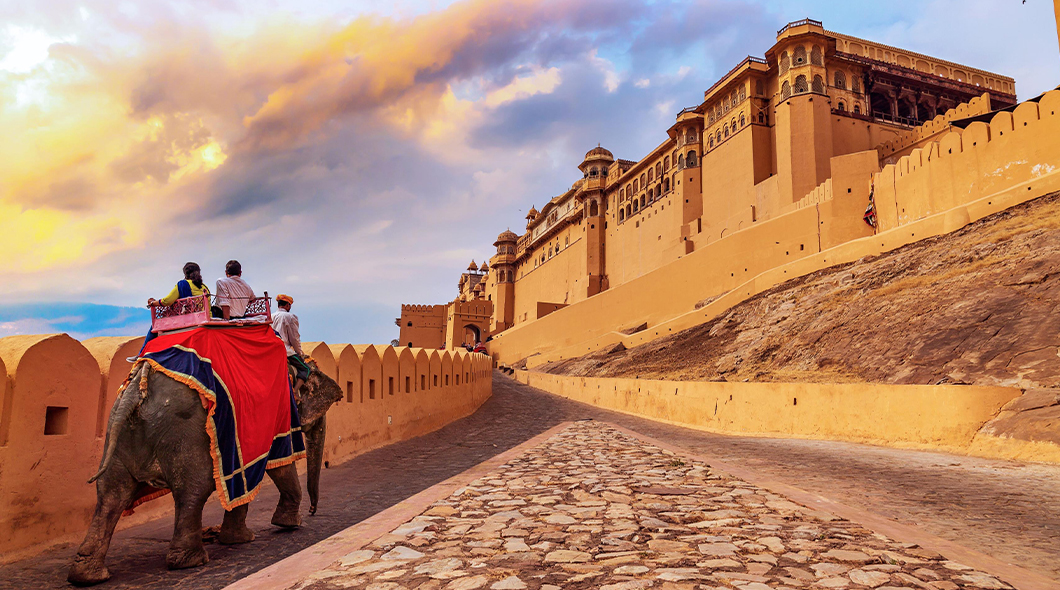Are you also planning a trip to Leh Ladakh? If yes, then I’m sure you might be riddled with some questions or the others. But don’t worry, we have got answers to all your queries.
This blog will cover some of the most frequently asked questions about Leh Ladakh covering all the different aspects right from travel, safety, rentals, and more. However, in case you don’t find an answer to any of your specific queries, feel free to drop it in the comment section below and we’ll answer it for you.
General Information
Q. What is the old name of Ladakh?
A. Ladakh in the past was known by different names. Some people addressed it as Maryul (low land) while others as Kha-Chumpa, Kia-Chha, and Ma-Lo-Pho.
Q. What is the capital of Ladakh?
A. Ladakh is said to have two capitals with Kargil being the winter capital and Leh being the summer capital.
Q. What is Ladakh most famous for?
A. Ladakh is most famous for its breathtaking landscapes, serene monasteries, and rich cultural heritage. The region’s unique high-altitude desert environment, often referred to as the “Land of High Passes,” attracts adventure enthusiasts and nature lovers from around the world. The monasteries, such as Hemis, Thiksey, and Diskit, offer a glimpse into Tibetan Buddhist culture and art. Additionally, the vibrant festivals, such as the Hemis Festival, and the local handicrafts, including Pashmina shawls and traditional jewelry, are renowned.
Q. What is the largest town in Ladakh?
A. Leh is the largest town in Ladakh. It serves as the main hub for travelers and is the administrative center of the Leh district. The town is known for its bustling markets, historic palaces, and monasteries.
Q. Which district is known as the gateway of Ladakh?
A. The Kargil district is known as the gateway of Ladakh. It serves as a significant transit point for travelers heading to various parts of Ladakh and is an important town on the Srinagar-Leh highway.
Q. What is Ladakh popularly known as?
A. Ladakh is popularly known as the “Land of High Passes”, “Little Tibet” and “Roof of the World”. All of these nicknames reflect its rugged terrain and are based on the numerous mountain passes that connect the valleys and plateaus of the region.
Best Time to Visit
Q. Which is the cheapest month to visit Leh?
A. The cheapest months to visit Leh are typically during the off-season, from November to March. During this time, tourist activity is low due to the extreme cold, and accommodation and travel costs are significantly reduced.
Q. Which month is the coldest in Leh?
A. January is the coldest month in Leh, with temperatures often dropping below freezing, reaching as low as -3°C during the day and -15 °C at night.
Q. Which is the hottest month in Leh?
A. July is the hottest month in Leh, with daytime temperatures ranging around 25°C (77°F) and occasionally reaching up to 30°C (86°F)
Q. In which month does snowfall start in Leh Ladakh?
A. Snowfall in Leh Ladakh typically starts in late October or early November and can continue through February. During this time, the whole region is covered with a thick blanket of snow with temperatures ranging between -25 to -10 degrees Celsius.
Q. Which is the off-season in Ladakh?
A. Winter is an off-season in Ladakh, starting from November to March, when temperatures are extremely low, and many roads and passes are closed due to heavy snowfall.
Q. Which month is the rainy season in Leh Ladakh?
A. Leh Ladakh does not experience a traditional rainy season like other parts of India. However, July and August can see occasional rainfall due to the monsoon influence, although it is generally minimal.
Q. What is the best time to go to Ladakh?
A. The best time to visit Ladakh is from May to September i.e., during the summer season. During these months, the weather is pleasant, and all the major roads and passes are open, making it ideal for sightseeing and adventure activities.
Q. In which month is Ladakh closed?
A. Ladakh is not officially closed during any month, but access can be highly restricted from November to March due to heavy snowfall and extreme weather conditions, making travel difficult.
Q. In which month Ladakh is open?
A. Ladakh is fully open from June to October when the weather is favorable, and all major tourist routes and attractions are accessible.
Travel & Safety
Q. What are the rules for tourists in Ladakh?
A. Tourists in Ladakh are expected to follow several rules to ensure the safety and preservation of the environment:
- Carry necessary permits for restricted areas.
- Respect local customs and traditions.
- Avoid littering and ensure proper waste disposal.
- Limit the use of plastic and opt for eco-friendly alternatives.
- Acclimatize properly to avoid altitude sickness.
- Follow road safety rules, especially on mountain passes.
Q. Do’s and don’ts for Ladakh trip?
A. Do’s:
- Acclimatize for at least 24 – 48 hours after arrival.
- Stay hydrated and eat light meals.
- Carry necessary medications for AMS (Acute Mountain Sickness).
- Respect local customs and ask for permission before photographing people.
- Follow environmental guidelines and minimize your ecological footprint.
Don’ts:
- Do not consume alcohol or smoke during the initial days as it can worsen AMS.
- Do not litter; always dispose of waste properly.
- Avoid disturbing wildlife and natural habitats.
Q. Is Ladakh safe for couples?
A. Yes, Ladakh is generally safe for couples. The region is known for its friendly and hospitable locals.
Q. Can girls travel to Ladakh?
A. Yes, girls can safely travel to Ladakh. It is considered a safe destination for solo female travelers, although taking general travel precautions is advisable.
Q. Is a passport required for Ladakh?
A. No, a passport is not required for Indian citizens traveling to Ladakh. However, foreign nationals must carry their passports and obtain the necessary permits to visit restricted areas.
Q. What documents are required to visit Ladakh?
A. As an Indian citizen, you will require an Inner Line Permit (ILP) to travel across Ladakh. You can obtain the permit online or from the Office of Deputy Commissioner in Leh. Or the best of all, you can ask your tour operator to arrange it for you.
Q. Do we need a permit to visit Ladakh?
A. Yes. Both international and domestic tourists visiting Ladakh require a Protected Area Permit (PAP) or a Restricted Area Permit (RAP).
Q. What are the restricted areas in Ladakh?
A. Restricted areas in Ladakh include Nubra Valley, Pangong Lake, Tso Moriri, and the areas close to the Line of Actual Control (LAC) with China. These regions require special permits for both Indian and foreign tourists.
Q. Is a car allowed in Ladakh?
A. Yes, cars are allowed in Ladakh. Many travelers prefer to explore Ladakh by car, whether it’s a private vehicle or a rented one. It is advisable to use a sturdy vehicle, preferably a 4X4, due to the challenging terrain.
Health & Safety
Q. What is AMS in Ladakh?
A. AMS stands for Acute Mountain Sickness. It is a condition caused by ascending to high altitudes too quickly, resulting in symptoms like headaches, nausea, dizziness, and shortness of breath. Proper acclimatization and hydration are key to preventing AMS.
Q. Is there any oxygen problem in Leh?
A. Yes, the oxygen levels in Ladakh are relatively lower and drop down more as you move towards the higher regions. You might experience difficulty in breathing, and skin and lip dryness.
Geography & Nature
Q. How many feet is Ladakh?
A. Ladakh is situated at an average altitude of about 11,482 feet (3,500 meters) above sea level. Some areas, like the Khardung La pass, are even higher.
Q. How long is Khardung La Pass?
A. Khardung La Pass, one of the highest motorable roads in the world, is approximately 39.7 kilometers (24.7 miles) long. The pass sits at an altitude of about 18,380 feet (5,602 meters) above sea level.
Q. Which river flows in Leh?
A. The Indus River flows through Leh, providing a vital water source for the region. The river is an essential part of Ladakh’s landscape and cultural heritage.
Q. Which pass is famous in Ladakh?
A. Khardung La Pass is the most famous pass in Ladakh. It is one of the highest motorable passes in the world and serves as a gateway to the Nubra Valley.
Q. Which pass is on the way from Leh to Pangong Lake?
A. The Chang La pass is on the way from Leh to Pangong Lake. Situated at an elevation of approximately 17,590 feet (5,360 meters), Chang La is one of the highest motorable roads in the world. It serves as a significant route connecting Leh to the beautiful Pangong Lake. The pass is known for its challenging terrain and offers breathtaking views of the surrounding mountains and valleys.
Specialties
Q. What is the main food of Ladakh?
A. The main food of Ladakh is influenced by Tibetan cuisine and consists of various hearty and nutritious dishes suitable for the cold climate. Some of the staple foods include:
- Thukpa: A noodle soup made with meat, vegetables, and spices, providing warmth and energy.
- Momos: Steamed or fried dumplings filled with meat or vegetables, often served with spicy dipping sauces.
- Skyu: A traditional pasta dish made with kneaded dough and cooked with vegetables and meat.
- Tsampa: Roasted barley flour mixed with butter tea or water, often eaten for breakfast.
Q. What is the main festival of Ladakh?
A. The main festival of Ladakh is the Hemis Festival, celebrated at the Hemis Monastery. This vibrant festival takes place annually in the summer, usually in June or July, and lasts for two days. It commemorates the birth of Guru Padmasambhava, the founder of Tibetan Buddhism. The festival is marked by colorful masked dances, traditional music, and elaborate costumes. Monks perform sacred Cham dances to the rhythmic beats of drums and cymbals, depicting various mythical stories and teachings of Buddhism. The Hemis Festival is a significant cultural event, attracting tourists and locals alike.
Q. What is the special drink of Ladakh?
A. The special drink of Ladakh is Butter Tea (Gur Gur Chai). This traditional beverage is made by churning tea leaves, yak butter, and salt together. It has a distinct taste and is an essential part of the Ladakhi diet, providing the necessary warmth and energy in the cold climate. Butter tea is often consumed multiple times a day, especially during winter months, and serves as a symbol of hospitality in Ladakhi culture.
Q. What is Ladakh famous for?
A. Ladakh is famous for its stunning landscapes, unique culture, and adventure tourism. Key highlights include:
- Scenic Beauty: The region is known for its breathtaking views of snow-capped mountains, high-altitude deserts, and pristine lakes like Pangong Lake and Tso Moriri.
- Monasteries: Ladakh is home to numerous ancient monasteries, including Hemis, Thiksey, and Diskit, showcasing the rich Buddhist heritage.
- Adventure Activities: Popular for trekking, river rafting, and mountain biking, Ladakh attracts adventure enthusiasts from around the world.
- Cultural Diversity: The region has a unique blend of Tibetan and Indian cultures, reflected in its festivals, cuisine, and traditional crafts.
Routes & Transportation
Q. Which route is best to visit Ladakh?
A. The best routes to visit Ladakh are the Manali-Leh Highway and the Srinagar-Leh Highway:
- Manali-Leh Highway: This route spans approximately 490 kilometers and offers spectacular views of the Himalayas. It passes through several high-altitude passes, including Rohtang La, Baralacha La, and Tanglang La. The journey is challenging due to rugged terrain and unpredictable weather, but it’s a favorite among adventure seekers.
- Srinagar-Leh Highway: This route is about 434 kilometers long and is relatively easier compared to the Manali-Leh Highway. It passes through the beautiful Kashmir Valley and crosses the famous Zoji La pass. The road conditions are generally better, making it a preferred choice for many travelers.
Q. Which road is famous in Leh Ladakh?
A. The Khardung La Pass road is famous in Leh Ladakh. It is one of the highest motorable roads in the world, situated at an elevation of around 18,380 feet (5,602 meters). The road connects Leh to the Nubra Valley and offers breathtaking views of the surrounding mountains and valleys. Due to its challenging terrain and high altitude, it is a popular destination for adventure enthusiasts.
Q. Which car is best for Ladakh?
A. The best car for Ladakh should be a high-ground-clearance SUV with four-wheel drive (4WD) capabilities to handle the rugged terrain and unpredictable weather conditions. Popular choices include:
- Maruti Suzuki Alto K10
- Mahindra Thar
- Maruti Suzuki Jimny
- Toyota Innova
- Mahindra Scorpio N
These vehicles are well-suited for navigating the challenging roads and high-altitude passes in Ladakh.
Also Read : Top 10 Essential Hiking Gear – Pack Smart for Your Next Adventure
Q. What is the RTO code of Ladakh?
A. The RTO (Regional Transport Office) code of Ladakh is LA. This code is used for vehicle registration and other transport-related documentation in the region.
Costs & Preparation
Q. How much money do we need to go to Ladakh?
A. The cost of a trip to Ladakh can vary depending on the duration, mode of transport, accommodation preferences, and activities planned. On average:
- Budget Travelers: ₹20,000 to ₹30,000 for a week-long trip, including basic accommodations, food, and local transport.
- Mid-Range Travelers: ₹40,000 to ₹60,000 for a week-long trip, including comfortable accommodations, meals, and guided tours.
- Luxury Travelers: ₹80,000 and above for a week-long trip, including luxury accommodations, meals, private tours, and additional activities.
It’s important to budget for permits, entry fees, and emergency expenses.
Q. How to pack for Ladakh?
A. Packing for Ladakh requires careful consideration of the region’s climate and altitude. Essential items include:
- Warm Clothing: Thermal wear, fleece jackets, down jackets, and windproof/waterproof outerwear.
- Footwear: Sturdy trekking shoes with good grip, warm socks, and comfortable walking shoes.
- Accessories: Sunglasses, sunscreen, lip balm, gloves, and a hat or cap.
- Medical Kit: Basic first-aid supplies, prescribed medications, and medicines for altitude sickness.
- Miscellaneous: Power banks, extra batteries, a good quality camera, and reusable water bottles.
Q. Which shoes to wear in Leh?
A. It’s recommended to wear sturdy, insulated, comfortable trekking shoes with good grip and ankle support. Go for waterproof shoes as they are ideal for navigating rocky terrain and streams. Along with this, make sure to pack warm socks and comfortable walking shoes for less demanding activities.
Attractions
Q. What is the most visited place in Ladakh?
A. The most visited place in Ladakh is Pangong Lake. Known for its stunning blue waters that change shades throughout the day, Pangong Lake is a major tourist attraction. It is situated at an altitude of about 14,270 feet (4,350 meters) and stretches across the India-China border. The lake gained even more popularity after being featured in the Bollywood movie “3 Idiots.”
Q. What is the famous product of Ladakh?
A. Ladakh is famous for its Pashmina Shawls. Made from the fine wool of the Changthangi goats, these shawls are known for their softness, warmth, and intricate designs. Pashmina products from Ladakh are highly valued and sought after by tourists and buyers from around the world.
Q. What mainly attracts tourists to Ladakh?
A. Ladakh attracts tourists mainly due to its:
- Breathtaking Landscapes: High-altitude deserts, pristine lakes, and towering mountains.
- Cultural Heritage: Ancient monasteries, vibrant festivals, and a unique blend of Tibetan and Indian cultures.
- Adventure Opportunities: Trekking, mountain biking, river rafting, and exploring remote regions.
- Spiritual Significance: The region’s deep-rooted Buddhist traditions and peaceful ambiance.
Q. Which is the most beautiful city in Ladakh?
A. The most beautiful city in Ladakh is Leh. As the capital and largest city, Leh offers a mix of natural beauty, historical sites, and cultural experiences. Key attractions include the Leh Palace, Shanti Stupa, and nearby monasteries such as Thiksey and Hemis. The city serves as a base for exploring the surrounding regions and high-altitude lakes.






